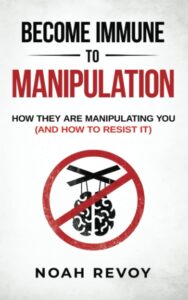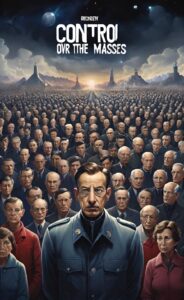In the realm of power politics, a clever tactic has been utilized for centuries to manipulate the masses. The divide and conquer strategy, an artful manipulation of differences, has successfully served to control societies, exploiting divisions along the lines of political orientation, racial or ethnic identity, and socio-economic status. This method, while destructive to the unity of community, has proven effective in maintaining the status quo and consolidating power in the hands of the few.
Historical Foundations of the Divide and Conquer Strategy
The roots of the divide and conquer strategy sink deep into the bowels of history, with its foundations firmly entrenched in strategies of ancient empires and colonial rule. The Romans, astute in their understanding of power dynamics, were among the earliest to employ this method. By stirring conflict between opposing tribes, they weakened their adversaries, making it easier to seize control. The legacy of this strategy did not die with the Roman Empire and their Vatican puppeteers (pagan priest class.)
In fact, it was adopted and perfected by European colonizers. These powers capitalized on pre-existing tribal, religious, or ethnic divisions to retain their dominance over colonized lands. As society has evolved, so too has the application of this strategy. In today’s world, it is implemented more subtly, yet its effects are more pervasive. Its modern incarnation preys on societal diversity, leveraging it to mute the collective power of the masses. From Babylon to the digital age, the divide and conquer strategy has remained a constant, serving as a tool for control across centuries and civilizations.
Psychological Manipulation to Divide Races and Identity Politics
In the artful deployment of the divide and conquer strategy, one of the most effective tools is the psychological manipulation of racial and ethnic identities. This tactic involves emphasizing and exaggerating differences between races and ethnicities, creating an atmosphere of fear and loathing for the ‘other.’ This fuels deep-rooted biases and prejudices, ultimately leading to a fragmented society.
Within this context, identity politics can sometimes be an unintentional accomplice. It emphasizes specific characteristics or groups, inadvertently reinforcing divisions rather than fostering unity. The focus on distinct identities provides a platform for those in power to manipulate public emotions, turning diversity into a weapon rather than a strength.
The real damage lies not just in the immediate conflict this strategy provokes, but in the long-term divisions it entrenches within society. These divisions can be manipulated over time to maintain control and prevent any collective challenge to the status quo. Identity politics becomes problematic when co-opted as part of the divide and conquer strategy, serving the interests of power rather than those of justice and equality.
In essence, the psychological manipulation of races and identity politics is not about the exploitation of diversity itself, but about the manipulation of perceptions and emotions related to this diversity. By understanding these dynamics, society can work to dismantle this manipulative strategy and promote unity against the delusional ruling class.
Influence of Media and Propaganda in the Divide and Conquer Strategy
Media wields considerable influence in the enactment of the divide and conquer strategy. Through its power to mold public sentiment, it often operates as the communication conduit for those maintaining control. Partisan news that accentuates divides and stereotypes that heighten racial discord are widely disseminated, further driving wedges in society. In this way, media can stoke the flames of division, lending a significant hand to those applying this divisive strategy.
Techniques of propaganda, such as the spreading of false information and the magnification of fear, are also used extensively. These tactics serve to widen societal schisms, creating an environment where unity against any form of oppression or injustice is increasingly difficult to achieve. The media’s role in this strategy showcases the subtle and pervasive ways in which public perception is shaped and manipulated, and how societal division is used as a mechanism to maintain control and conformity.

> Check Current Book Prices <
Political Exploitation of the Divide and Conquer Strategy
The intricate dance of power in the political sphere often employs the divide and conquer strategy as a potent tool for influence and control. Politics has a tendency to weaponize ideological differences, pushing them to the forefront and making them appear irreconcilable. This often manifests in the form of an ‘Us vs Them’ narrative, fueling a political culture of divisiveness and confrontation rather than cooperation.
Such a narrative is not only misleading but is also a clear distraction from the real issues that often go overlooked. The end result is a society more focused on partisan battles than addressing core challenges. This division serves as a smokescreen, camouflaging the true power dynamics at play and keeping the masses preoccupied with battles along party lines. This political manipulation of the divide and conquer strategy is an insidious process, one that necessitates awareness and discernment from the public to counteract its damaging effects.



Consequences of the Divide and Conquer Strategy on Society
The implications of implementing the divide and conquer strategy in society are substantial and far-reaching. This method breeds deep-seated suspicion and hostility amongst various social groups, paving the way for societal instability and chaos. It stands as a significant obstacle to social cohesion, impeding initiatives aimed at community improvement. Another adverse effect is the aggravation of socio-economic disparities, creating an increasingly wide chasm between the haves and the have-nots.
The strategy cleverly distracts society from identifying and tackling mutual problems, focusing instead on the perceived ‘other’. This not only undermines societal progress but also perpetuates the power dynamics favoring the manipulators. The pervasive influence of this strategy affects every aspect of society, from individual relationships to national politics, making its effects both insidious and destructive. Therefore, recognizing the implications of this divide and conquer strategy on society is a necessary step towards understanding how to counter it effectively.
Overcoming the Divide and Conquer Strategy with the Power of Unity
To dismantle the divisive strategy and foster a united front, collective efforts towards promoting unity through freedom of expression are paramount. This involves embracing and valuing our diverse backgrounds, while simultaneously highlighting the common objectives and shared values that bring us together as a community. A significant step is cultivating media literacy and critical thinking skills to counter the divisive narratives often propagated by media outlets. This, coupled with fostering open conversations, can help dispel any harmful propaganda and misinformation.
A participatory political culture, one that values inclusion and resists polarization of issues, is another powerful tool in this battle. It enables us to see past the ‘Us vs Them’ narrative and focus on the common challenges that need addressing, like food prices, affordable housing, and gas prices. Yet, the most potent weapon against this strategy is consciousness. Understanding the existence of the divide and conquer strategy and its implications equips individuals and communities with the power to reject divisive narratives. Through unity and awareness, we can strive towards a society that values equity and justice over manipulation and control.






